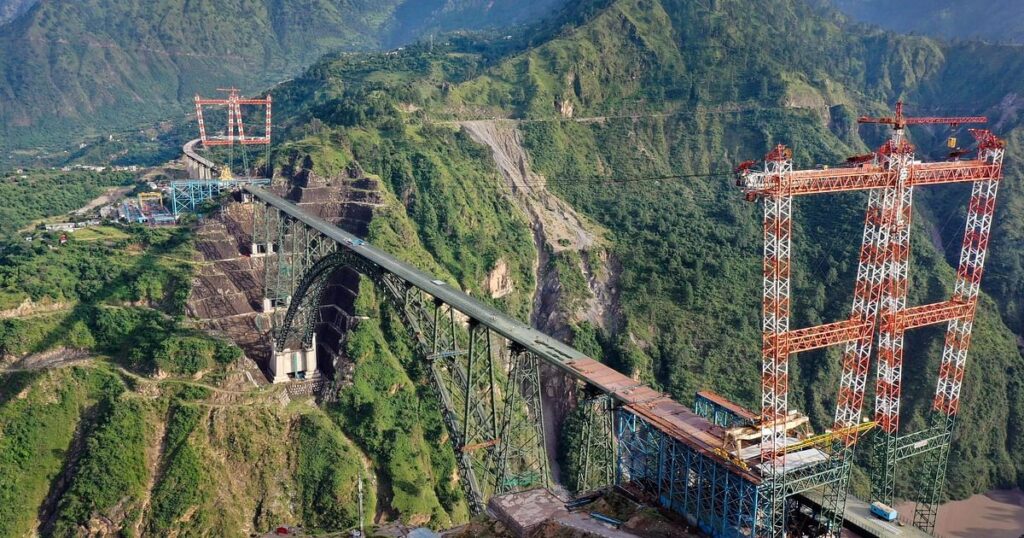NEW DELHI: Over 100 sensors, a 780-metre-long blast-proof platform and a control room with 150 servers are among the state-of-the-art equipment being deployed to protect Chenab Bridge in Jammu and Kashmir – the world's highest bridge used for rail traffic.
An engineering marvel, the 1,315-metre-long bridge is a steel and concrete arch built to withstand wind speeds of up to 260 kilometres per hour and designed to withstand the most powerful earthquakes.
The bridge is located between Bhakkar and Kauli in Reasi district of Jammu division and is a key link in the Katra-Banihal section of the Udhampur-Srinagar-Baramulla Rail Link (USBRL) project.
The Railways conducted a successful trial run of an eight-carriage MEMU train on Chenab Bridge on June 20. The successful trial has paved the way for launch of rail services on the Reasi to Baramulla route in Kashmir.
A protective platform has been installed on the surface of the 359-metre-high railway bridge over river Chenab to absorb shocks during train movement, while 120 sensors have been installed to monitor the structural health of the arch bridge round the clock, railway officials said.
These sensors will provide vital data on wind speed, temperature, humidity, vibration and other necessary information in real time, officials said.
As the bridge is located in a hilly area, it is expected to be exposed to winds of various speeds, making it imperative for the railway company to closely monitor the wind speeds.
The bridge is equipped with sensors that can raise a red light and sound an alarm in the stationmaster's office in case of an emergency, such as wind speed exceeding acceptable limits.
Trained personnel are deployed to monitor and operate the bridge structural health monitoring system.
In addition to checking the wind speed, a team of experts in the control room will also monitor various other functions of the system, including wind direction, ambient temperature and load on each section of the bridge.
Regular train services across the bridge are expected to begin soon.
Published on June 23, 2024 at 22:00 IST



